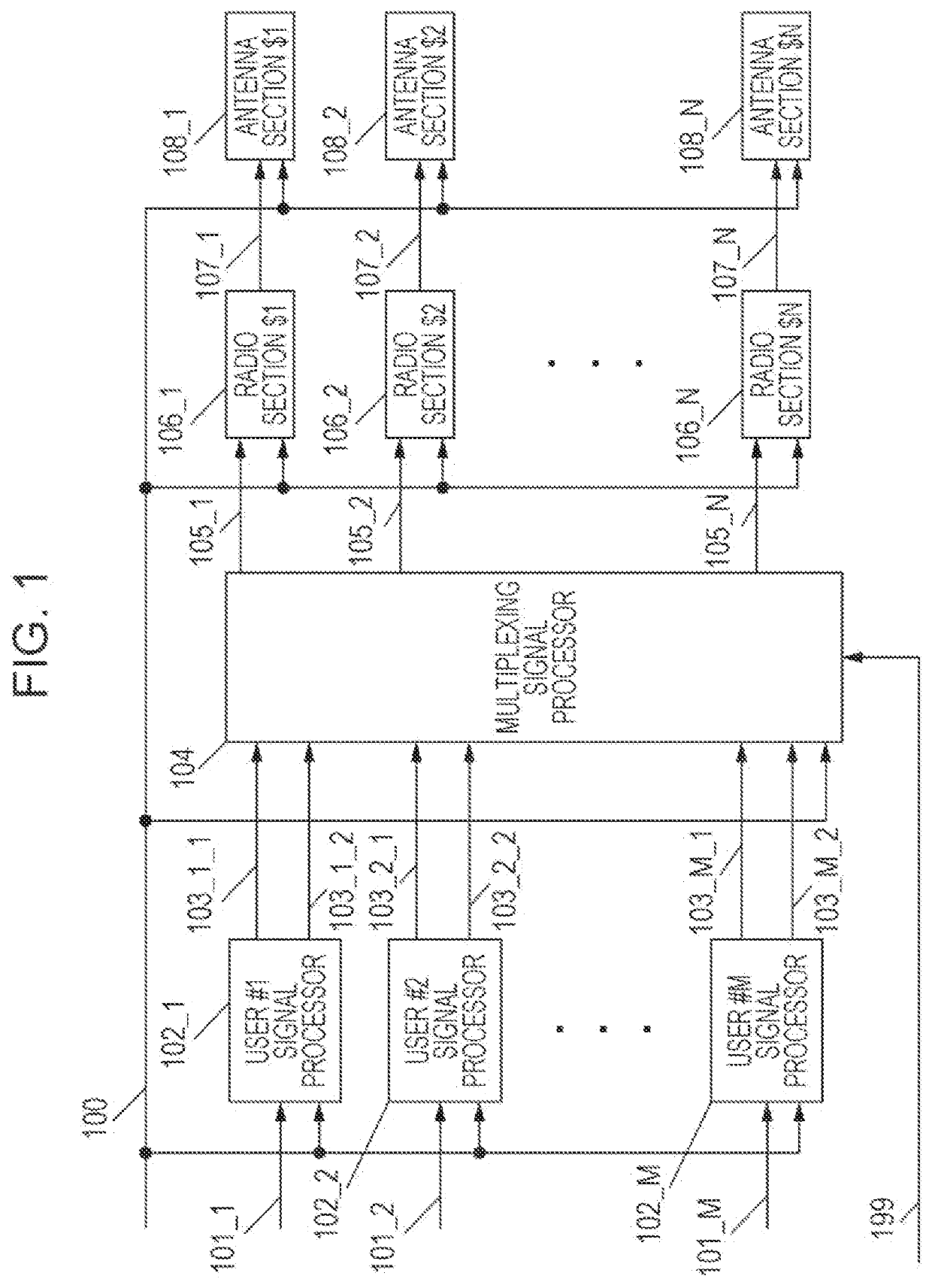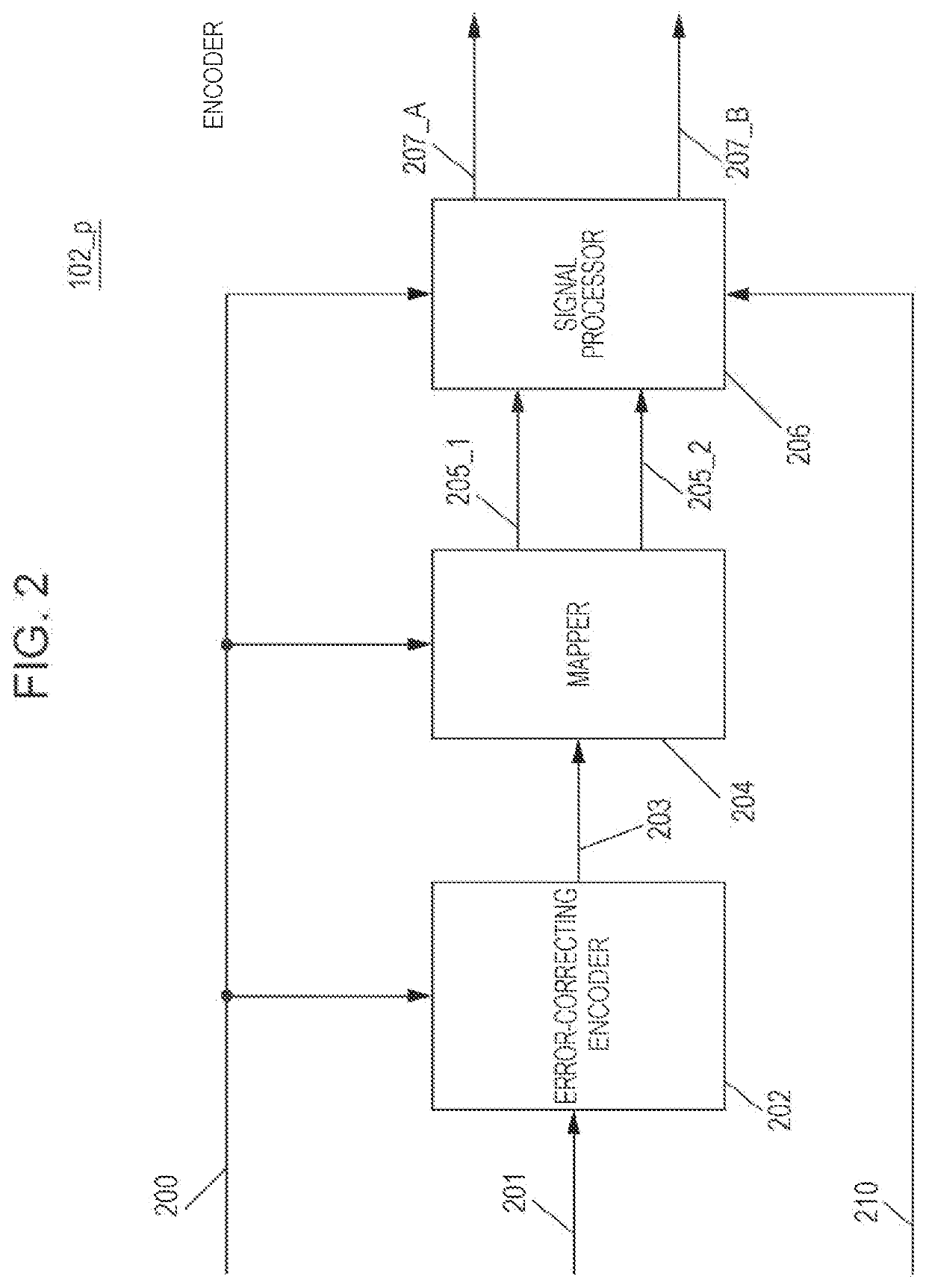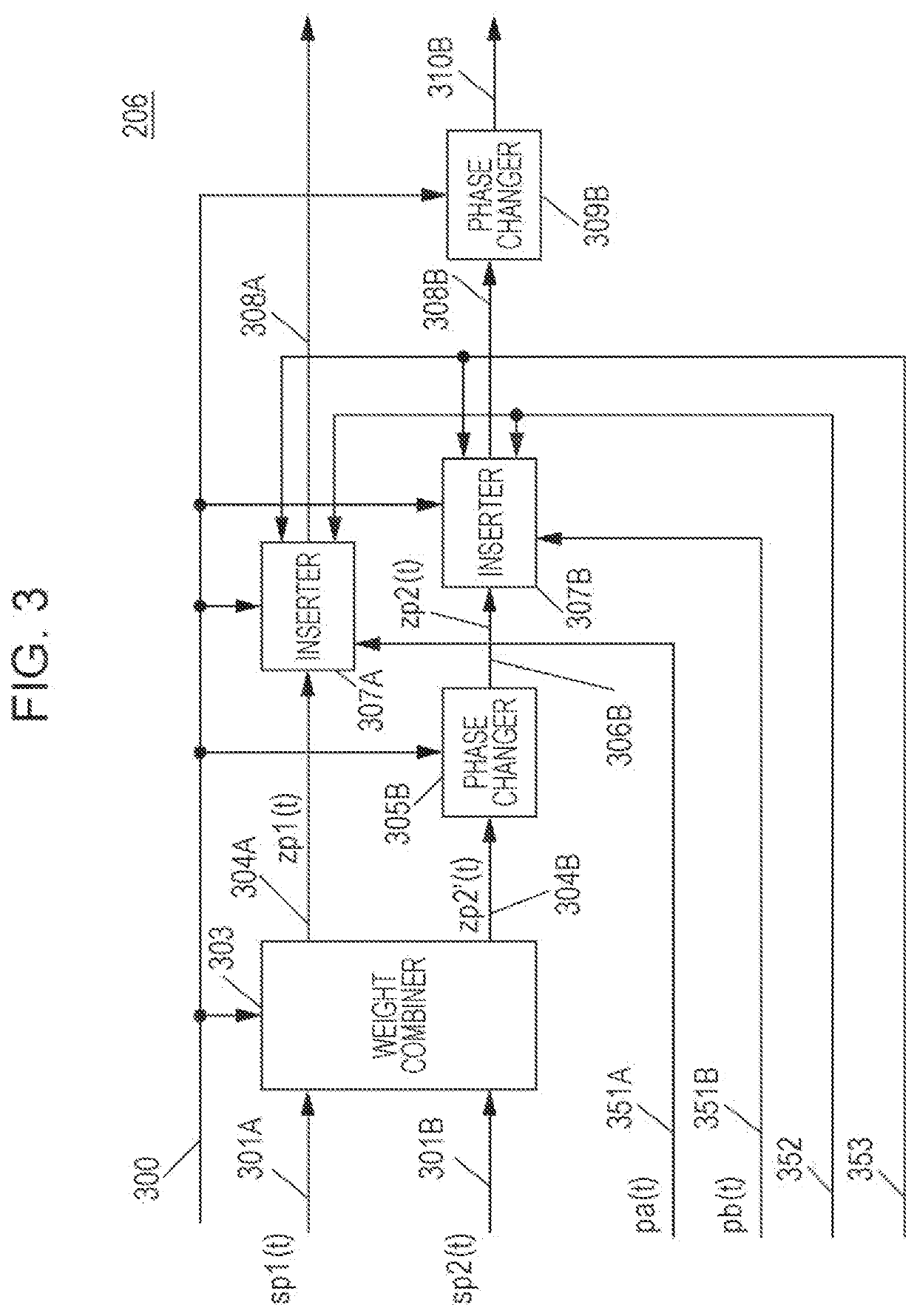Integrated circuit
a circuit and integrated circuit technology, applied in the field of transmission apparatus, to achieve the effect of improving the quality of data reception
- Summary
- Abstract
- Description
- Claims
- Application Information
AI Technical Summary
Benefits of technology
Problems solved by technology
Method used
Image
Examples
example 1
[0446]In a case where the terminal #p transmits the data 3001 set to “01” (i.e., “communication scheme #A” is supported), the base station (AP) that has obtained the data determines that the data 3003 is invalid because “error-correcting coding scheme #D” is not selectable in “communication scheme #A”. When generating modulated signals addressed to the terminal #p, the base station (AP) performs error-correcting coding by using “error-correcting coding scheme #C”.
example 2
[0447]In a case where the terminal #p transmits the data 3001 set to “01” (i.e., “communication scheme #A” is supported), the base station (AP) that has obtained the data determines that the data 2801 and the data 2901 are invalid because the “scheme for transmitting multiple modulated signals including multiple streams by using multiple antennas” is not supported in “communication scheme #A”. When generating modulated signals addressed to the terminal, the base station (AP) generates a modulated signal of a single stream and transmits it.
[0448]In addition to the above, a case with the following constraints will be discussed.
Constraint condition 1: In “communication scheme #B”, it is assumed that, in the single-carrier scheme, in the “scheme for transmitting multiple modulated signals including multiple streams by using multiple antennas”, the scheme for “performing phase change on at least one modulated signal among multiple modulated signals” is not supported (other schemes may be...
example 3
[0450]In a case where the terminal #p transmits the data 3002 set to “01” (i.e., only the single-carrier scheme is supported), the base station (AP) that has obtained the data determines that the data 2801 is invalid. When generating modulated signals addressed to the terminal #p, the base station (AP) does not use the scheme for “performing phase change on at least one modulated signal among multiple modulated signals”.
[0451]FIG. 30 is an example of the reception capability notification symbol 2702 transmitted by the terminal #p. As described above by using FIG. 30, in a case where the terminal #p transmits multiple pieces of reception capability information (for example, the data 2801, the data 2901, the data 3001, the data 3002, and the data 3003 in FIG. 30), the base station (AP) may need to determine that some of the multiple pieces of reception capability information are invalid when deciding a method for generating modulated signals addressed to the terminal #p on the basis o...
PUM
 Login to View More
Login to View More Abstract
Description
Claims
Application Information
 Login to View More
Login to View More - R&D
- Intellectual Property
- Life Sciences
- Materials
- Tech Scout
- Unparalleled Data Quality
- Higher Quality Content
- 60% Fewer Hallucinations
Browse by: Latest US Patents, China's latest patents, Technical Efficacy Thesaurus, Application Domain, Technology Topic, Popular Technical Reports.
© 2025 PatSnap. All rights reserved.Legal|Privacy policy|Modern Slavery Act Transparency Statement|Sitemap|About US| Contact US: help@patsnap.com



